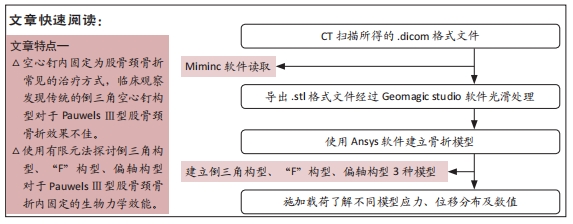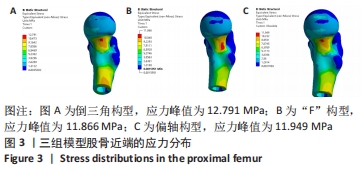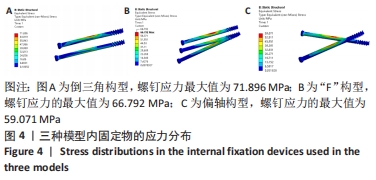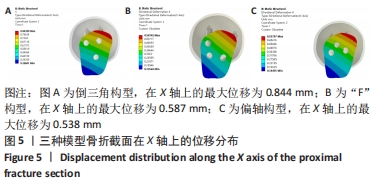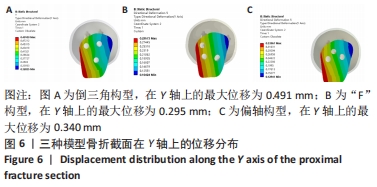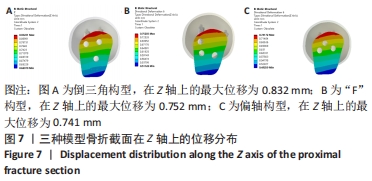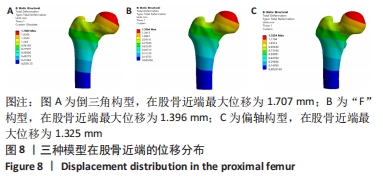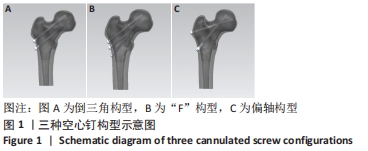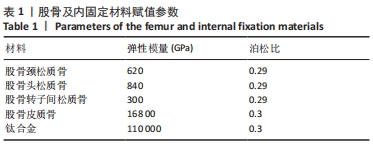[1] RAMADANOV N, TOMA I, HERKNER H, et al. Factors that influence the complications and outcomes of femoral neck fractures treated by cannulated screw fixation. Sci Rep. 2020;10(1):758.
[2] 杨伟臻,张剑锋,李文琴,等.青壮年股骨颈骨折术后股骨头坏死的多元相关性分析[J].中国当代医药,2017,24(1):71-75.
[3] TIANYE L, PENG Y, JINGLI X, et al. Finite element analysis of different internal fixation methods for the treatment of Pauwels type III femoral neck fracture. Biomed Pharmacother. 2019;112:108658.
[4] FILIPOV O. Biplane double-supported screw fixation (F-technique): a method of screw fixation at osteoporotic fractures of the femoral neck. Eur J Orthop Surg Traumatol. 2011;21(7):539-543.
[5] HAWKS MA, KIM H, STRAUSS JE, et al. Does a trochanteric lag screw improve fixation of vertically oriented femoral neck fractures? A biomechanical analysis in cadaveric bone. Clin Biomech (Bristol, Avon). 2013;28(8):886-891.
[6] WANG SH, YANG JJ, SHEN HC, et al. Using a modified Pauwels method to predict the outcome of femoral neck fracture in relatively young patients. Injury. 2015; 46(10):1969-1974.
[7] WIRTZ DC, PANDORF T, PORTHEINE F, et al. Concept and development of an orthotropic FE model of the proximal femur. J Biomech. 2003;36(2):289-293.
[8] KOBAYASHI E, WANG TJ, DOI H, et al. Mechanical properties and corrosion resistance of Ti-6Al-7Nb alloy dental castings. J Mater Sci Mater Med. 1998; 9(10):567-574.
[9] PIOLETTI DP, RAKOTOMANANA LR. Can the increase of bone mineral density following bisphosphonates treatments be explained by biomechanical considerations? Clin Biomech (Bristol, Avon). 2004;19(2):170-174.
[10] 张晟,王一民,王博炜,等.InterTan钉板系统与空心钉固定Pauwels III型股骨颈骨折的有限元分析[J].中华创伤骨科杂志,2013,15(1):13-17.
[11] HEINER AD, BROWN TD. Structural properties of a new design of composite replicate femurs and tibias. J Biomech. 2001;34(6):773-781.
[12] GOFFIN JM, PANKAJ P, SIMPSON AH. The importance of lag screw position for the stabilization of trochanteric fractures with a sliding hip screw: a subject-specific finite element study. J Orthop Res. 2013;31(4):596-600.
[13] FLURY A, FINSTERWALD M, DIMITRIOU D, et al. Could a Simple Screening Procedure Identify Patients With Early Cognitive Impairment? Implications for the Treatment of Geriatric Femoral Neck Fractures. J Arthroplasty. 2020;35(4):1023-1028.
[14] SU Z, LIANG L, HAO Y. Medial femoral plate with cannulated screw for Pauwels type III femoral neck fracture: A meta-analysis. J Back Musculoskelet Rehabil. 2021;34(2):169-177.
[15] GIORDANO V, ALVES DD, PAES RP, et al. The role of the medial plate for Pauwels type III femoral neck fracture: a comparative mechanical study using two fixations with cannulated screws. J Exp Orthop. 2019;6(1):18.
[16] CHA YH, YOO JI, HWANG SY, et al. Biomechanical Evaluation of Internal Fixation of Pauwels Type III Femoral Neck Fractures: A Systematic Review of Various Fixation Methods. Clin Orthop Surg. 2019;11(1):1-14.
[17] LI J, WANG M, ZHOU J, et al. Optimum Configuration of Cannulated Compression Screws for the Fixation of Unstable Femoral Neck Fractures: Finite Element Analysis Evaluation. Biomed Res Int. 2018;2018:1271762.
[18] STOFFEL K, ZDERIC I, GRAS F, et al. Biomechanical Evaluation of the Femoral Neck System in Unstable Pauwels III Femoral Neck Fractures: A Comparison with the Dynamic Hip Screw and Cannulated Screws. J Orthop Trauma. 2017;31(3):131-137.
[19] 中华医学会骨科学分会创伤骨科学组,中国医师协会骨科医师分会创伤专家工作委员会. 成人股骨颈骨折诊治指南[J]. 中华创伤骨科杂志,2018,20(11): 921-928.
[20] GUIMARÃES JAM, ROCHA LR, NORONHA ROCHA TH, et al. Vertical femoral neck fractures in young adults: a closed fixation strategy using a transverse cancellous lag screw. Injury. 2017;48 Suppl 4:S10-S16.
[21] FREITAS A, TOLEDO JÚNIOR JV, FERREIRA DOS SANTOS A, et al. Biomechanical study of different internal fixations in Pauwels type III femoral neck fracture - A finite elements analysis. J Clin Orthop Trauma. 2020;14:145-150.
[22] LI J, WANG M, ZHOU J, et al. Finite element analysis of different screw constructs in the treatment of unstable femoral neck fractures. Injury. 2020;51(4):995-1003.
[23] 任栋,程培焱,宋朝晖,等.不同数量和空间构型的空心拉力螺钉治疗股骨颈骨折的有限元分析[J].中华创伤杂志,2017,33(9):815-822.
[24] 陈宇峰,任栋,耿林丹,等.菱形构型空心钉固定PauwelsⅢ型股骨颈骨折生物力学特性的有限元分析[J].中华创伤骨科杂志,2020,22(12):1080-1085.
[25] ZHANG YL, CHEN S, AI ZS, et al. Osteonecrosis of the femoral head, nonunion and potential risk factors in Pauwels grade-3 femoral neck fractures: A retrospective cohort study. Medicine (Baltimore). 2016;95(24):e3706.
[26] KUAN FC, HSU KL, LIN CL, et al. Biomechanical properties of off-axis screw in Pauwels III femoral neck fracture fixation: Bicortical screw construct is superior to unicortical screw construct. Injury. 2019;50(11):1889-1894.
[27] 王子凡,缪佳庆.空心钉F形内固定骨质疏松性Pauwels Ⅱ型股骨颈骨折的体外生物力学研究[J].中国骨与关节损伤杂志,2020,35(2):153-155.
[28] 范智荣,苏海涛,周霖,等.新型股骨颈内固定系统治疗不稳定性股骨颈骨折的有限元分析[J].中国组织工程研究,2021,25(15):2321-2328.
|
